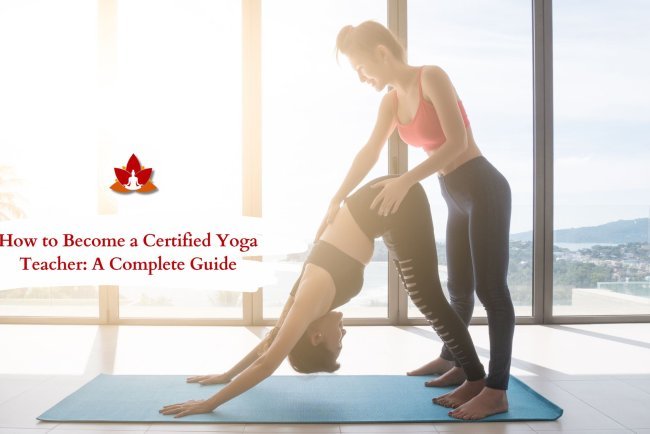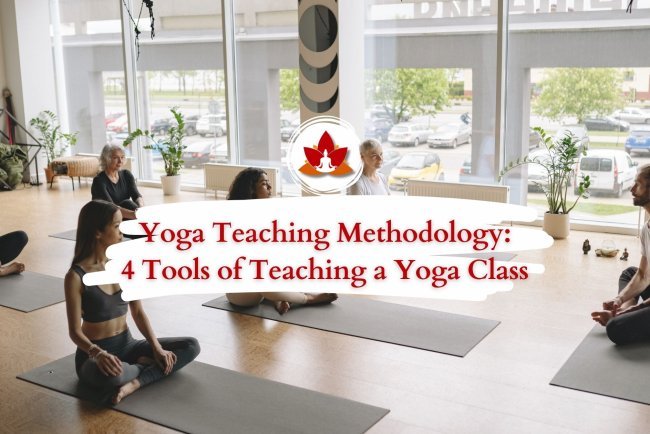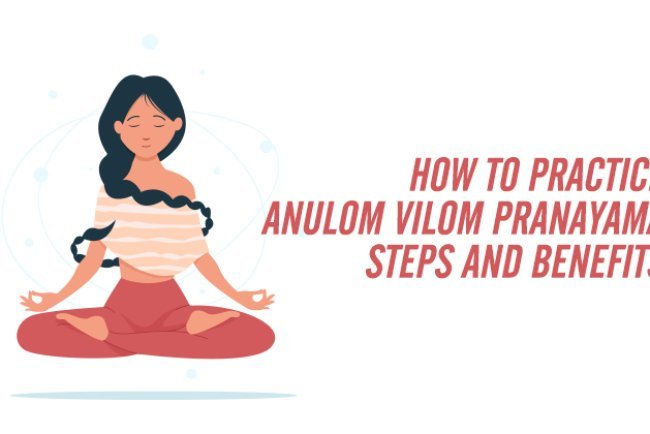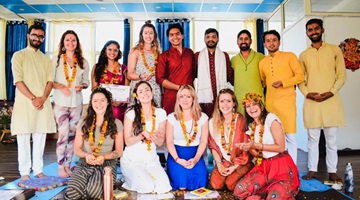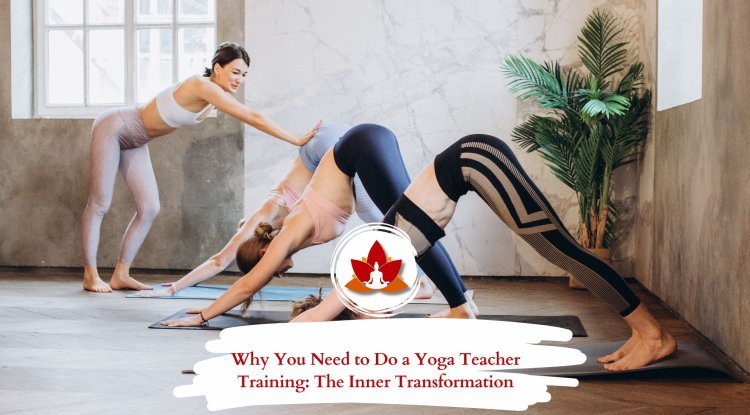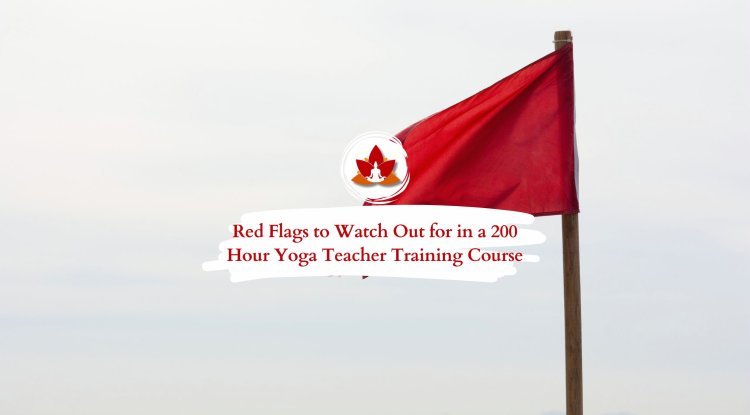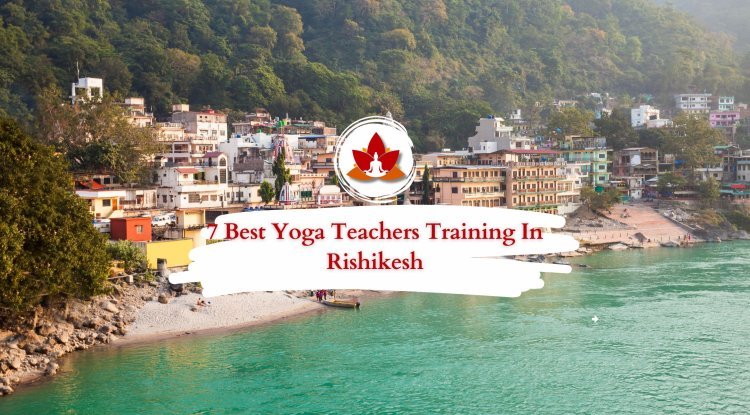How to Choose the Ideal Yoga Teacher Training Program in Rishikesh

Congratulations!
You’ve made the empowering decision to pursue your Yoga Teacher Training (YTT)—a journey that promises not only personal growth but a transformative experience you’ll carry for life.
Why Choose Yoga Teacher Training?
The benefits of a YTT go far beyond learning how to teach asanas or perform impressive poses. It’s about cultivating a deep personal practice, gaining a rich understanding of yogic philosophy, and learning how to guide others on their path to wellness.
You’ll strengthen your body, sharpen your mind, and awaken your spirit—all within a supportive community of like-minded souls.
But Here’s the Catch…
These life-changing benefits only come if you choose the right training program. Unfortunately, not all yoga teacher trainings are created equal. While many will gladly take your money, not all will offer the quality, authenticity, or support you deserve.
So before you roll out your mat and commit, remember: choosing the right YTT is one of the most important decisions you’ll make on your yoga journey. Choose wisely—and your training will be nothing short of extraordinary.
History and Trends in Yoga Practice
In 2022, Yoga Alliance conducted its first-ever Yoga in the World Research Study, a global expansion of its earlier Yoga in America report from 2016. The results showed a powerful trend: more people in the U.S. are practicing yoga than ever before—with 38.4 million Americans engaging in yoga that year alone.
While motivations for starting yoga vary, the most common reason in 2022 was stress reduction and relief—a shift from 2016, when flexibility topped the list. Other popular reasons include:
-
General health and wellness
-
Spiritual and personal growth
-
Weight management
-
Emotional balance and self-awareness
Not only is yoga practice growing, but so is the community of certified teachers and schools. Today, Yoga Alliance reports over 100,000 registered teachers and more than 7,000 registered schools worldwide—proof that interest in yoga education and instruction continues to thrive.
Interestingly, most yoga teachers didn’t begin their journey intending to teach. Through the practice of svadhyaya—the yogic principle of self-study—practitioners often find themselves reflecting on life’s deeper questions:
“What would make my life more meaningful?”
For some, that answer becomes clear: to share the gift of yoga with others.
Traditional Yoga Training
In its roots, yoga was never taught in group classes or quick certifications. Instead, becoming a yoga teacher was a slow, sacred evolution—one that unfolded over many years of personal practice, devotion, and direct guidance from a master teacher.
In ancient India, senior students became teachers only after years—sometimes decades—of study and spiritual discipline. Their training went far beyond asanas (physical postures); it included deep immersion in yogic philosophy, ancient scriptures, and pranayama (conscious breathwork), shaping both their inner and outer lives.
The turning point for yoga in the West came in 1893, when Swami Vivekananda delivered a historic speech at the World Parliament of Religions in Chicago. His powerful words introduced the Western world to the essence of yoga—not as mere exercise, but as a spiritual path. Over the following years, he toured the U.S., delivering lectures on Vedanta and yoga philosophy, planting the seeds of what would become a global movement.
Over the next century, yoga continued to evolve and expand, steadily gaining popularity across the West. Yet at its heart, the essence of traditional yoga remains timeless: a journey of discipline, self-study, and transformation.
What to Expect from a Yoga Teacher Training Program
A Yoga Teacher Training (YTT) program is so much more than learning how to guide people through poses. It’s a deep dive into the philosophy, practice, and lifestyle of yoga—designed to transform not only your physical practice but your entire perspective on life.
During your training, you’ll explore:
-
Yoga philosophy and the ancient wisdom of the Yoga Sutras
-
Mindfulness and the art of cultivating presence
-
Pranayama (conscious breathwork) to harness life force energy
-
Anatomy and alignment for safe, effective teaching
-
The core principles of yogic lifestyle and ethics
You'll also gain a clear understanding of the differences between major styles of yoga, including Vinyasa, Ashtanga, Hatha, Yin, Yoga Nidra, and Tantra—allowing you to choose or blend approaches that resonate with your personal journey.
Through this immersive experience, your body, mind, and spirit will evolve. Many students complete their YTT not just ready to teach, but with a profound sense of clarity, purpose, and inner growth.
The Challenge of Choosing a Program
With thousands of yoga teacher training programs available around the world, how do you choose one that’s authentic, reputable, and truly worth your time and investment?
Whether you're considering a 200-hour foundational course or a 300-hour advanced training, options abound. You might train in a local studio, on a mountaintop in Nepal, or even from the comfort of your living room through an online program.
But here’s the truth: not all programs are created equal—and unfortunately, some exist more to make money than to nurture future teachers.
So, how do you avoid falling for a beautifully marketed program that falls short?
While there’s no one-size-fits-all formula, there are key things to consider that can help you confidently choose a training aligned with your values, goals, and learning style.
Factors to Consider When Choosing a Yoga Teacher Training
Choosing the right yoga teacher training (YTT) program is a personal and powerful decision—one that can shape your future as a practitioner, teacher, and student of life. To help you navigate the options with clarity, here are the most important factors to consider:
1. Set Your Intention
Before anything else, get crystal clear on why you're doing this.
-
Are you looking to deepen your personal practice?
-
Do you want to teach yoga professionally?
-
Is certification by Yoga Alliance important to you?
-
Do you want to learn a specific style of yoga?
If teaching isn’t your goal, choose a program that focuses more on philosophy, self-development, or meditation. If you are serious about becoming a teacher, look for a school whose teaching style and lead instructors inspire you. And if you're building a yoga career or brand, a 300-hour YTT may be the perfect next step.
2. Choose the Right Style
Yoga isn't one-size-fits-all.
While Hatha Yoga forms the foundation of most trainings, many programs now include blends of Vinyasa, Ashtanga, Yin, Restorative, or even Tantra and Yoga Nidra.
If you’re drawn to a particular lineage—like Iyengar or Ashtanga—seek out a school with a dedicated focus. But if you’re not sure yet, a multi-style YTT will give you a broader perspective and help you discover what resonates most.
3. Consider the Location
Where you train shapes your experience.
-
Local studios offer convenience and a chance to support your community.
-
Destination trainings in India, Bali, Thailand, or the Himalayas offer full immersion in yoga's roots or exotic beauty.
-
Online YTTs provide flexibility and accessibility for busy lifestyles.
Choose a setting that aligns with your lifestyle, comfort, and inspiration.
4. Think About Time Commitments
YTTs come in different formats:
-
Immersive Intensives (typically 3–5 weeks)
-
Extended Weekend/Evening Courses (3–12 months)
-
Self-paced Online Trainings
If you're balancing work, family, or studies, a longer, part-time program might fit better. If you're ready to dive in full-time, an intensive retreat-style YTT offers fast, deep transformation. Online options now offer ultimate flexibility, often with lifetime access.
5. Consider the Cost (But Don’t Let It Rule You)
YTTs range from budget-friendly to premium luxury.
Be sure to consider:
-
Tuition
-
Travel (if abroad)
-
Accommodation and meals (included or not)
Remember, the value of a YTT is in its quality, not just its price. Some affordable programs offer world-class teaching—so do your homework.
6. Talk to Other Teachers
Ask your favorite yoga teacher where they trained.
-
What was their experience like?
-
Would they recommend it?
-
Are there alumni you can reach out to?
Word-of-mouth and testimonials can be far more insightful than a flashy brochure.
7. Find a School That Feels Right
You’re going to spend a lot of time with your lead trainers. Choose a school or teacher you respect, admire, and connect with.
Attend a class (in-person or online), observe their style, and ask yourself:
“Can I see myself learning from this person for the next few weeks or months?”
A great school will feel safe, supportive, and inspiring.
8. Will You Get Practical Teaching Experience?
A solid YTT should offer hands-on teaching practice in a safe and supportive environment.
Make sure your training includes:
-
Practice teaching fellow students
-
Constructive feedback from mentors
-
Opportunities to build confidence in real-world settings
Some programs focus too much on theory and not enough on actual teaching experience—don’t skip this part!
9. Class Size Matters
Smaller classes often mean more personalized attention—but there’s a sweet spot.
-
Under 10 students: intimate, but may limit exposure to diverse bodies and learning styles.
-
15–30 students: ideal balance of personal support and group energy.
-
36+ students: can feel less personal unless there’s a large teaching staff.
Ask how many teachers are present per group and what the teacher-to-student ratio is.
10. Continued Education Opportunities
Does the school offer 300-hour, 500-hour, or specialized certifications like Prenatal, Ayurveda, or Yoga Therapy?
Schools that offer continued learning usually have a stronger support system, more experienced faculty, and a vibrant alumni community. This makes it easier to grow beyond your 200-hour and deepen your path.
Why Choose Rishikesh for Yoga Teacher Training?
-
Nestled in the foothills of the Himalayas and blessed by the sacred Ganges River, Rishikesh is more than just a location—it's the birthplace of yoga and a spiritual epicenter for seekers around the world.
-
Sure, places like Bali or Costa Rica are stunning and have become popular yoga hubs—but Rishikesh offers something unique: authentic, time-honored tradition. Yoga is not just practiced here—it is woven into the cultural fabric, passed down for generations.
Pros of Doing Your YTT in Rishikesh
-
Birthplace of Yoga
Train in the land where yoga originated, and immerse yourself in teachings that stay true to the ancient yogic scriptures and philosophies. -
World-Class Teachers
Learn from highly experienced gurus and yoga masters—many of whom have been teaching for 30, 40, even 50+ years. -
Affordability
Compared to Western countries, YTTs in Rishikesh are incredibly affordable, offering great value without compromising quality. -
Style Diversity
Explore a wide variety of yoga styles, including Hatha, Ashtanga, Vinyasa, Kundalini, and Yin—plus access to meditation, mantra chanting, and Ayurveda. -
Vibrant Spiritual Community
Outside your training, you’ll find ashrams, satsangs, fire ceremonies, and kirtans that enrich your spiritual journey and help you connect with like-minded travelers. -
Cultural and Travel Adventure
India is an experience like no other—colorful, chaotic, humbling, and magical. From temples and river ceremonies to local cuisine and markets, every day brings something new.
Cons of Doing Your YTT in Rishikesh
-
Spiritual Scams & Low-Quality Schools
With its popularity, Rishikesh has also attracted fake gurus and mass-produced YTTs that lack depth or authenticity. Research carefully and choose accredited, reputable schools. -
Safety & Hygiene
While many students feel safe, women should take extra precautions when traveling alone. Food hygiene can also be an issue—digestive upsets are common, especially when adjusting to local cuisine. -
Simple Accommodations
Expect basic living conditions—rooms may not include heating, air conditioning, or reliable hot water. AC and upgraded amenities may come at an additional cost. -
Visa Requirements
Navigating India’s visa process can be time-consuming or challenging, depending on your country of origin. -
Travel Challenges
Getting to Rishikesh often involves long flights and multiple connections, and the culture shock can be intense—“India is not for beginners” is a phrase heard for good reason.
Choosing a Location in Rishikesh: Tapovan or Ram Jhula
When planning your Yoga Teacher Training (YTT) in Rishikesh, one of the most important decisions you’ll make is where to stay. While Rishikesh itself is a relatively small city, YTTs are primarily concentrated in two neighborhoods on opposite sides of the Ganges River: Tapovan (north of the river) and Ram Jhula (to the south).
Although they may look close on the map, getting from one to the other can take 30 minutes by foot or rickshaw. So where you choose to stay will significantly shape your daily experience—both in and out of the classroom.
Tapovan: Buzzing, Modern, and Social
Tapovan is the more commercial and developed area of Rishikesh. It’s home to the largest number of yoga schools, and offers a vibrant mix of modern amenities, wellness offerings, and traveler-friendly cafes.
What to Expect:
-
A wide range of YTT programs
-
Sound baths, drop-in classes, kirtans, and guided meditations
-
Trendy cafes, smoothie bars, and organic restaurants
-
Easy access to adventure sports like rafting and trekking (Rishikesh is the adventure capital of India)
-
A more touristy atmosphere, with a mix of foreign yogis and Indian tourists (expect occasional stares!)
Tapovan is ideal if you enjoy a lively, social environment with the convenience of modern amenities. However, the area can get noisy and crowded, especially with motorbikes, traffic, and construction. If you choose a YTT in Tapovan, consider selecting a school slightly on the outskirts, closer to nature, to enjoy a more peaceful stay.
Ram Jhula: Peaceful, Spiritual, and Immersive
Cross the pedestrian suspension bridge known as Ram Jhula, and you enter a completely different world. This quieter area is steeped in tradition and surrounded by lush forests, temples, and ashrams.
What to Expect:
-
Fewer yoga schools, but more traditional ashram-based YTTs
-
A serene, meditative environment ideal for spiritual immersion
-
Minimal traffic—less noise, fewer distractions
-
Dense jungle surroundings with monkeys, river paths, and mountain views
-
Fewer cafes and shops (but still enough to meet your basic needs)
Ram Jhula is perfect if you seek solitude, nature, and a deeply immersive yogic experience. You won’t find as much nightlife or modern convenience, but you will find peace, tradition, and a stronger connection to yogic roots.
How to Choose a Yoga School in Rishikesh
So, you've set your heart on doing your Yoga Teacher Training (YTT) in Rishikesh—the birthplace of yoga. But with hundreds of schools to choose from, how do you find the one that’s truly right for you?
The process can feel overwhelming, but it doesn’t have to be. With a clear set of criteria and a little research, you can confidently choose a program that aligns with your goals, values, and learning style.
Key Considerations Before You Commit
Before you book your spot, reflect on:
-
Your goals: Do you want to teach or just deepen your personal practice?
-
Your preferred style: Are you drawn to Hatha, Vinyasa, Ashtanga, or something else?
-
Your timeline: When are you available? Can you attend a full-time immersion or only weekends?
-
Your budget: What can you comfortably afford, including travel and accommodation?
-
Your future plans: Do you need Yoga Alliance certification to teach internationally?
Checklist: Choosing the Right Yoga School
Below is a quick-reference table to guide your decision:
|
Criteria |
What to Check |
Why It Matters |
|
Reviews |
Google reviews, testimonials, YouTube vlogs, alumni insights |
Get real-world experiences of past students—especially about teaching quality |
|
Yoga Style Offered |
Does it specialize in Hatha, Vinyasa, Yin, Ashtanga, Kundalini, etc.? |
Ensure alignment with your personal interest and future teaching path |
|
Affordability |
Tuition, accommodation, meals, hidden costs |
Prevent budget stress by knowing total costs upfront |
|
Yoga Alliance Certification |
Is it a Registered Yoga School (RYS)? |
Critical if you plan to teach internationally or want official recognition |
|
Teachers & Curriculum |
Teacher qualifications, experience, and training syllabus |
A strong curriculum and knowledgeable instructors shape your entire experience |
|
Training Schedule |
Is it a 3-week intensive, weekend format, or flexible online option? |
Fit the course into your lifestyle and commitments |
|
Location & Environment |
Peaceful, nature-based, or centrally located? |
The setting can greatly impact your focus, peace of mind, and personal growth |
When to Visit Rishikesh for Yoga Teacher Training
Yoga Teacher Training (YTT) programs in Rishikesh run year-round, typically starting on the 1st or 15th of each month. The best time to go depends on your preferences, travel goals, and comfort with different climates. Every season has its own charm—and its own challenges.
Best Times to Visit
October – November & March – April (Shoulder Seasons)
These are widely considered the best months to visit Rishikesh. The weather is pleasant and mild, with clear skies and comfortable temperatures—perfect for long training days and peaceful riverside walks.
-
Ideal for: Outdoor yoga, meditation, and exploring
-
Bonus: Fewer crowds than the peak winter season
Budget-Friendly Months: June – July
Fewer trainings run during the monsoon season, but those that do often offer discounted pricing. It’s hot and humid, and occasional rainfall can disrupt travel—but it’s a quieter time and perfect if you’re seeking solitude (and savings!).
-
Ideal for: Budget travelers and those who don’t mind a little heat
-
Bonus: Nature is lush and vibrant during monsoon
Any Time That Works for You
Life can be unpredictable, and not everyone can plan around ideal weather. Thankfully, Rishikesh is magical year-round—so long as your chosen school is running the course during your preferred month, you’ll have a transformational experience.
Festivals & Special Events
-
International Day of Yoga – June 21st
Join thousands of practitioners (including India’s Prime Minister!) on the banks of the Ganga for global yoga celebrations. -
Diwali – October/November
The Festival of Lights fills Rishikesh with lamps, joy, and spiritual energy. -
Holi – March
The Festival of Colors offers an unforgettable cultural experience—play, laugh, and connect with locals and fellow travelers.
Putting It All Together
Once you've considered the weather, the festivals, and the course schedules, take a moment to listen to your intuition.
Some schools or teachers may just "feel right"—trust that. Yoga teaches us to reconnect with our inner voice, and that clarity will help you choose not just when to go, but where and with whom to begin this life-changing journey.
What's Your Reaction?







